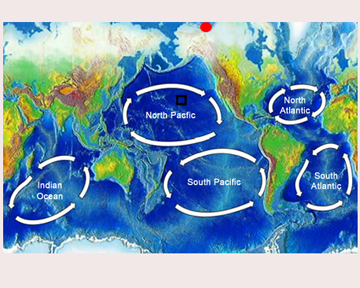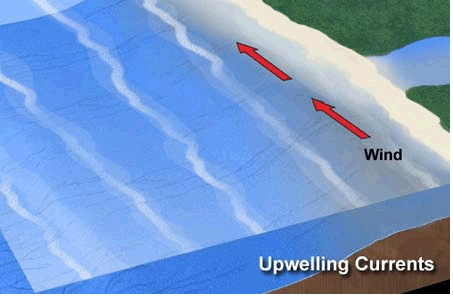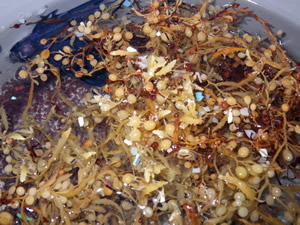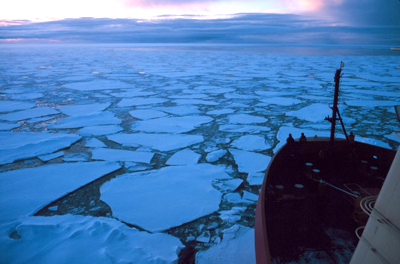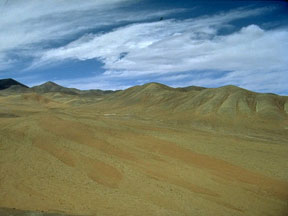Click on image for full size
Windows to the Universe
Surface Ocean Currents
The water at the ocean surface is moved primarily by winds that blow in certain patterns because of the Earth’s spin and the Coriolis Effect. Winds are able to move the top 400 meters of the ocean creating surface ocean currents.
Surface ocean currents form large circular patterns called gyres. Gyres flow clockwise in Northern Hemisphere oceans and counterclockwise in Southern Hemisphere oceans because of the Coriolis Effect. creating surface ocean currents. Near the Earth’s poles, gyres tend to flow in the opposite direction.
Surface ocean currents flow in a regular pattern, but they are not all the same. Some currents are deep and narrow. Other currents are shallow and wide. Currents are often affected by the shape of the ocean floor. Some move quickly while others move more slowly. A current can also change somewhat in depth and speed over time.
Surface ocean currents can be very large. The Gulf Stream, a surface current in the North Atlantic, carries 4500 times more water than the Mississippi River. Each second, ninety million cubic meters of water is carried past Chesapeake Bay (US) in the Gulf Stream.
Surface ocean currents carry heat from place to place in the Earth system. This affects regional climates. The Sun warms water at the equator more than it does at the high latitude polar regions. The heat travels in surface currents to higher latitudes. A current that brings warmth into a high latitude region will make that region’s climate less chilly.
Surface ocean currents can create eddies, swirling loops of water, as they flow. Surface ocean currents can also affect upwelling in many places. They are important for sailors planning routes through the ocean. Currents are also important for marine life because they transport creatures around the world and affect the water temperature in ecosystems.








